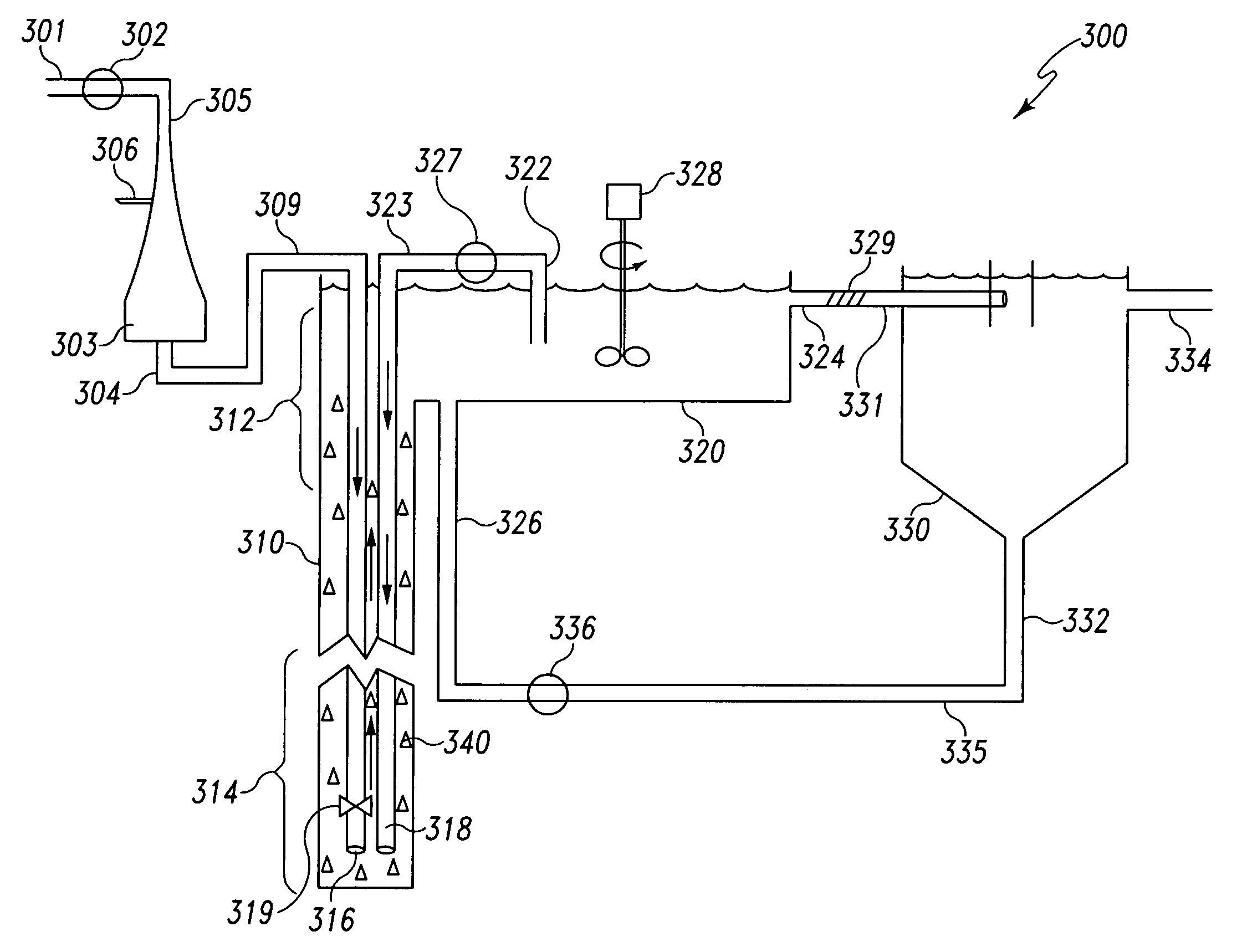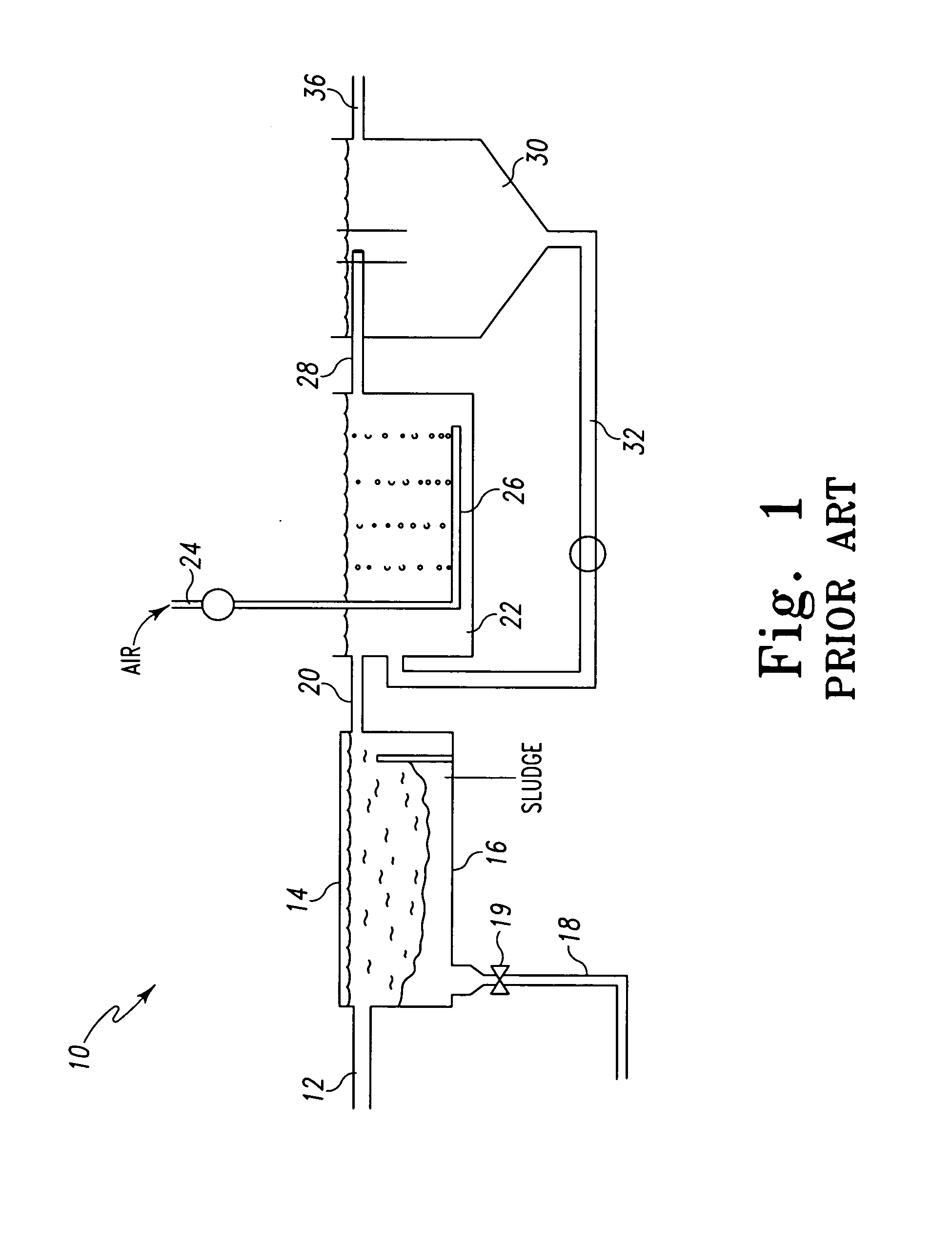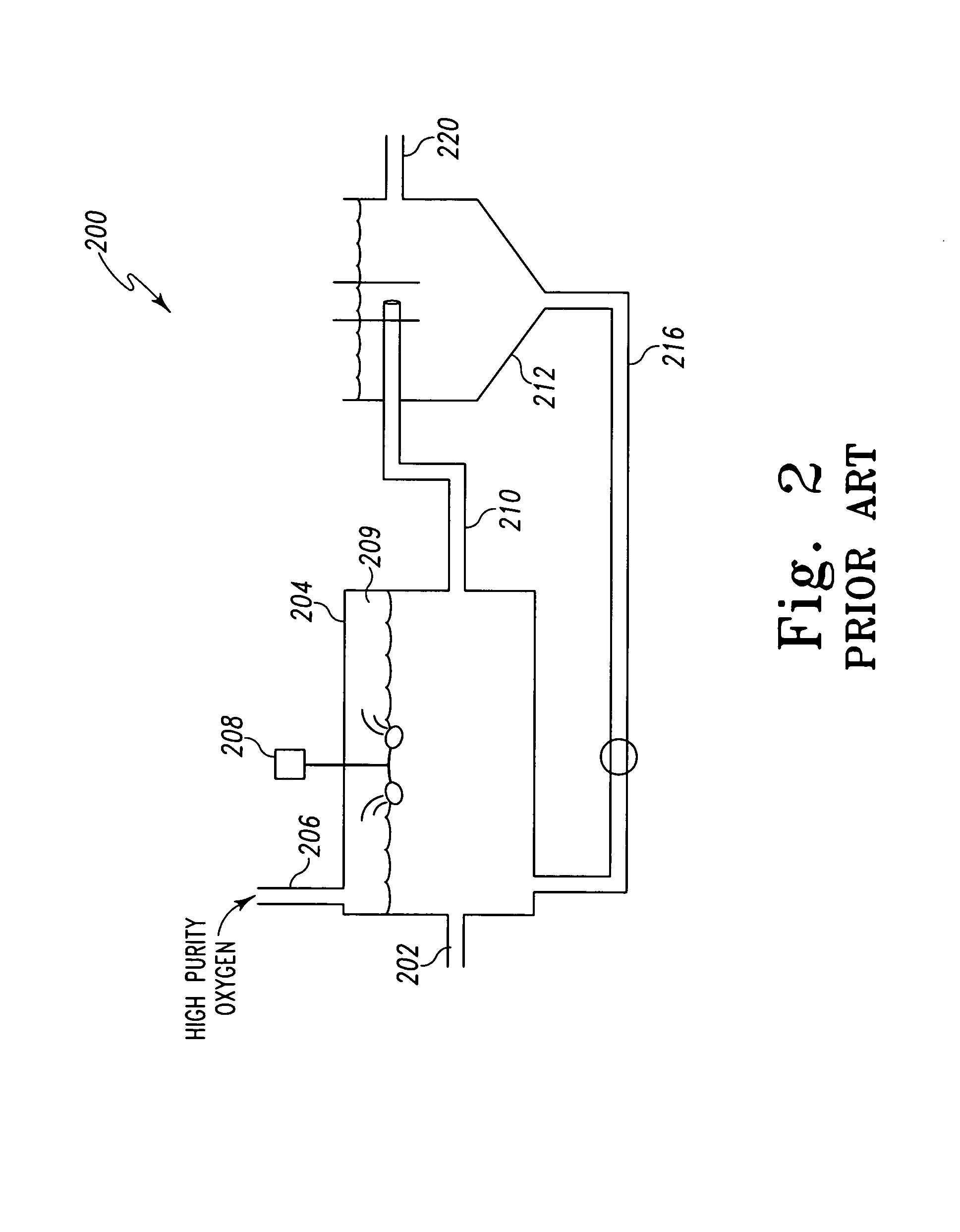System and method for oxygenation for wastewater treatment
- Summary
- Abstract
- Description
- Claims
- Application Information
AI Technical Summary
Benefits of technology
Problems solved by technology
Method used
Image
Examples
Embodiment Construction
[0046]The present invention is a system and method for the treatment of fluid, involving the dissolution of a gas into a fluid. For example, the present invention may be used as an oxygenation system, i.e., dissolving oxygen into water.
[0047]Referring now to FIG. 1, there is shown a schematic view of a fluid treatment system of a prior art system. As previously discussed, in the embodiment of FIG. 1, prior art system 10 includes system fluid inlet 12, primary clarification tank 14, line 18 for removing sludge from the system, open top reactor 22, gas inlet 24, air bubbling device 26, secondary clarification tank 30, line 32 for recirculating bacterial biomass from secondary clarification tank 30 back to reactor 22, and system outlet 36 for allowing treated fluid to flow out of secondary clarification tank 30, thereby exiting prior art system 10.
[0048]For the operation of prior art system 10, fluid flows into primary clarification tank 14, where insoluble contaminants within the flui...
PUM
| Property | Measurement | Unit |
|---|---|---|
| Length | aaaaa | aaaaa |
| Diameter | aaaaa | aaaaa |
| Diameter | aaaaa | aaaaa |
Abstract
Description
Claims
Application Information
 Login to View More
Login to View More - R&D
- Intellectual Property
- Life Sciences
- Materials
- Tech Scout
- Unparalleled Data Quality
- Higher Quality Content
- 60% Fewer Hallucinations
Browse by: Latest US Patents, China's latest patents, Technical Efficacy Thesaurus, Application Domain, Technology Topic, Popular Technical Reports.
© 2025 PatSnap. All rights reserved.Legal|Privacy policy|Modern Slavery Act Transparency Statement|Sitemap|About US| Contact US: help@patsnap.com



